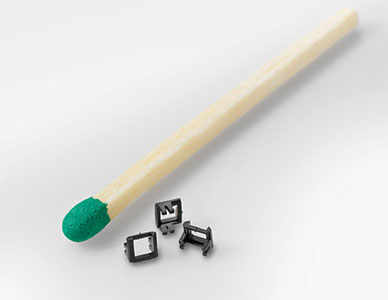| MAIN |
Arburg: Micro injection moulding machine for research activities at the IKV| Subj: Press-releses  To coincide with the 27th International Colloquium Plastics Technology, the Institute of Plastics Processing (IKV) in Industry and the Skilled Crafts at RWTH Aachen University put a new electric Allrounder 270 A injection moulding machine from Arburg, Lossburg, into operation in March 2014. At the heart of this system is a micro injection moulding unit, the plasticising cylinder of which has been developed jointly by Arburg and the IKV. To coincide with the 27th International Colloquium Plastics Technology, the Institute of Plastics Processing (IKV) in Industry and the Skilled Crafts at RWTH Aachen University put a new electric Allrounder 270 A injection moulding machine from Arburg, Lossburg, into operation in March 2014. At the heart of this system is a micro injection moulding unit, the plasticising cylinder of which has been developed jointly by Arburg and the IKV.The innovative plasticising unit, a so-called “inverse screw” is characterised by its special geometry. In distinction to conventional three-zone screws, the thread turns necessary for plasticising and melting the material are incorporated in the cylinder. Micro injection moulding machine with new plasticising unit The necessary relative movement is generated by means of an internal rotating piston. As the forces acting upon the piston are lower compared to plasticising screws, a significantly more compact plasticising system can be implemented, which is ideal for use in micro injection moulding. In addition to a reduced dwell time of the melt in the plasticising cylinder, the injection process can be controlled more effectively due to the smaller piston diameter. The mass fluctuations can thereby be reduced and the repeat accuracy of the injection cycle improved considerably. This has a positive effect on the achievable part quality. Influence of geometry investigated and optimised The effectiveness of the process has been evidenced through extensive joint studies carried out by Arburg and IKV. The influence of the geometry on the achievable feed rate and the melting characteristics in particular were investigated in order to progressively optimise the geometry. With the transfer of the geometry to a commercial injection moulding machine, use in a fully-automated injection cycle and consequently the potential of the technology in industrial application is now to be demonstrated. Joint development of new process techniques “Joint projects of this kind drive the development of new process technologies and enable systems manufacturers like us to further enhance our competence in the field of injection moulding,” explains Dr. Eberhard Duffner, Head of Development at injection moulding machine manufacturer Arburg, during presentation of the machine. Prof. Dr. Christian Hopmann, Head of the IKV concurs: “Developments such as this one in particular impressively demonstrate how important close cooperation between university research and industrial practice are for the competitiveness of companies.” Source: Arburg Previous news |
© 2002—2025 PLASTINFO